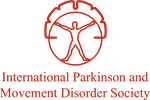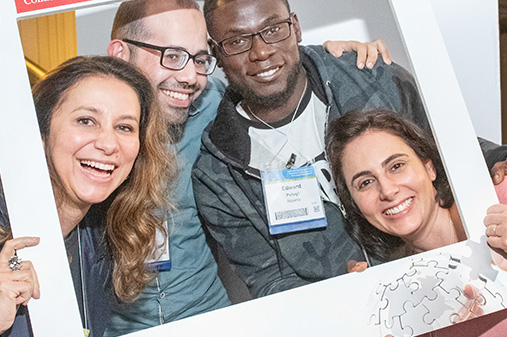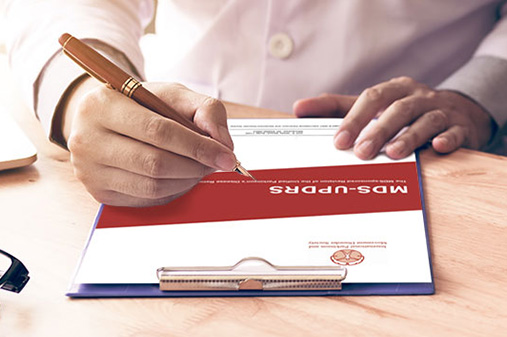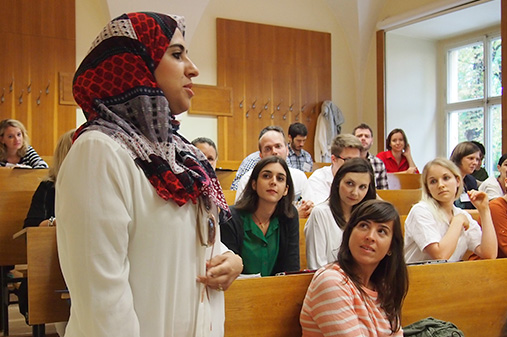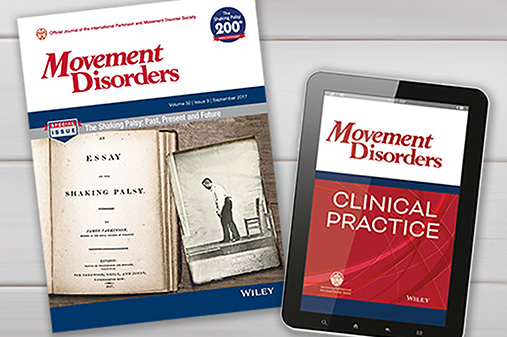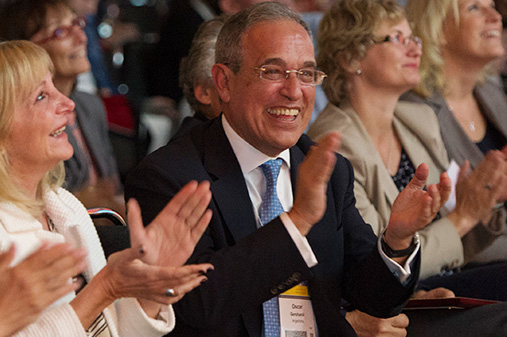 VOLUME 28, ISSUE 4 • DECEMBER 2024. Full issue »
VOLUME 28, ISSUE 4 • DECEMBER 2024. Full issue »


I am deeply honored and grateful to receive the prestigious Stanley Fahn Lecture Award, and I am especially proud to be the first Dutch recipient of this recognition. My journey in the field began at Leiden University, where I trained as a neurologist and completed my PhD in 1997 on hyperekplexia, a disorder characterized by exaggerated startle responses. In collaboration with my mentor Prof. Gert van Dijk, we demonstrated that the major and minor forms of hyperekplexia are clinically, electrophysiologically, and genetically distinct. This was the first in-depth study of a family previously described and video-recorded by Prof. George Bruyn in 1966 at Leiden University.
During my training, I had the privilege of conducting research fellowships with distinguished experts, including Prof. David S. Zee in Baltimore, and Prof. Peter Brown and Prof. Andrew Lees in London. After completing my fellowship in London, I worked as a neurologist in Amsterdam for 12 years, during which I proposed a new classification for startle disorders, published in Lancet Neurology. This classification included: 1) Hyperekplexia, 2) Startle-induced disorders, and 3) Neuropsychiatric startle disorders. A key discovery was my research on Latah, a culture-specific neuropsychiatric startle disorder, which revealed its clinical and neurophysiological features distinct from those of hyperekplexia.
In 2004, I received a VIDI grant, a pivotal moment in my career that enabled me to begin research into myoclonus dystonia, bridging neurology and psychiatry. The grant allowed me to explore new research avenues, expanding my focus on movement disorders. In 2012, I became Professor of Movement Disorders at the University Medical Center Groningen (UMCG), where I now lead the Expertise Centre for Movement Disorders. I am particularly proud of the PhD students and fellows we have trained at the Centre, focusing on both clinical and research expertise in clinical phenotyping.
There is ongoing debate about the role of traditional clinical phenotyping (phenomenology) as the primary diagnostic tool, especially in the era of molecular subtyping. In my view, phenomenology remains essential. As described by Anna Sadnicka and Mark Edwards in their recent viewpoint, Between Nothing and Everything: Phenomenology in Movement Disorders (Mov Disord, October 2023), understanding the relationship between diseases and a limited number of phenotypic patterns can provide valuable insights into how the sensorimotor system "breaks" in specific ways. This knowledge could lead to novel phenotype-specific therapies, regardless of the underlying disease process.
One of the most exciting ongoing projects in our center is the Next Move in Movement Disorders (NEMO) initiative, which aims to develop a computer-aided tool for classifying hyperkinetic movement disorders. NEMO is a cross-sectional research initiative focusing on both single and mixed phenotype movement disorders. The single phenotype groups include dystonia, myoclonus, and tremor, while the mixed phenotypes include conditions such as myoclonus-dystonia (with or without mutations in the SGCE gene). By combining clinical data with advanced technologies such as electromyography, accelerometry, and three-dimensional video recordings, we are classifying these disorders. The data is processed in collaboration with a team of data scientists (led by prof Michael Biehl) using machine learning algorithms to identify both known and potentially novel clinically relevant features. Deep learning techniques enable the algorithm to recognize complex patterns, while visual analytics assist clinicians in interpreting the results.
My broader research spans hyperkinetic movement disorders, focusing on improving phenotyping and exploring genetics, neurophysiology, imaging, and both motor and non-motor aspects of these disorders. Through collaborations with colleagues in initiatives such as the European COST Platform, the European Reference Network for Rare Neurological Disorders (ERN-RND), and the Movement Disorder Society, I have had the privilege of contributing to the global understanding of movement disorders and taking on leadership roles in these efforts.
In closing, I would like to express my deepest gratitude to my mentors, colleagues, and the members of the Expert Centre for Rare Movement Disorders team, especially the PhD students and research fellows who have worked alongside me. Their diverse perspectives have been invaluable. I also wish to acknowledge the continuous support I have received from my family and colleagues, both professionally and personally.
![]() Listen to the awardee interview »
Listen to the awardee interview »
Read more Moving Along:
